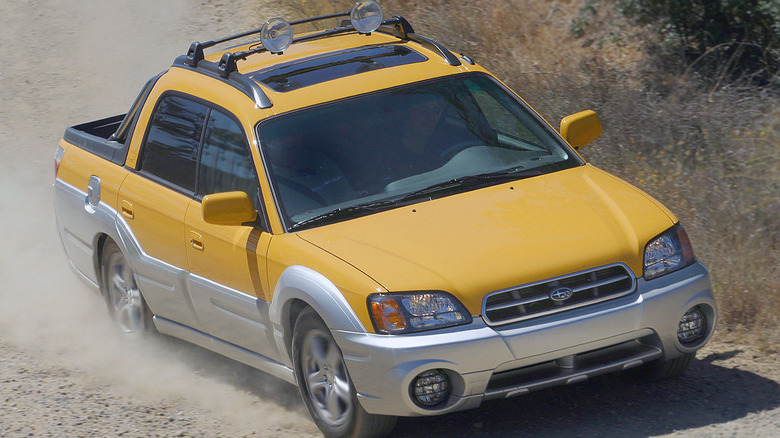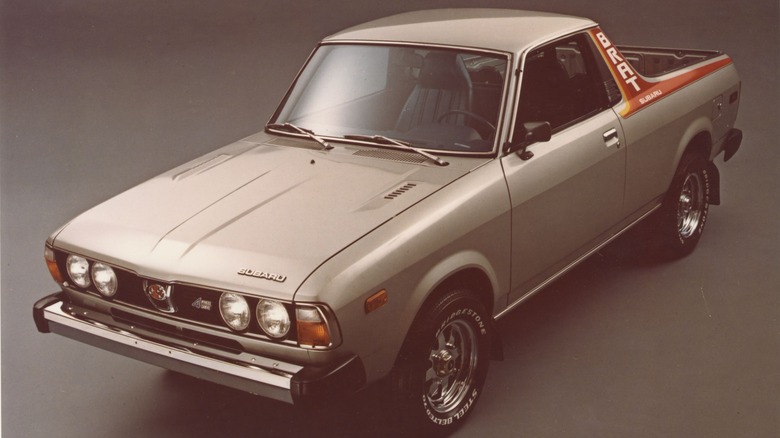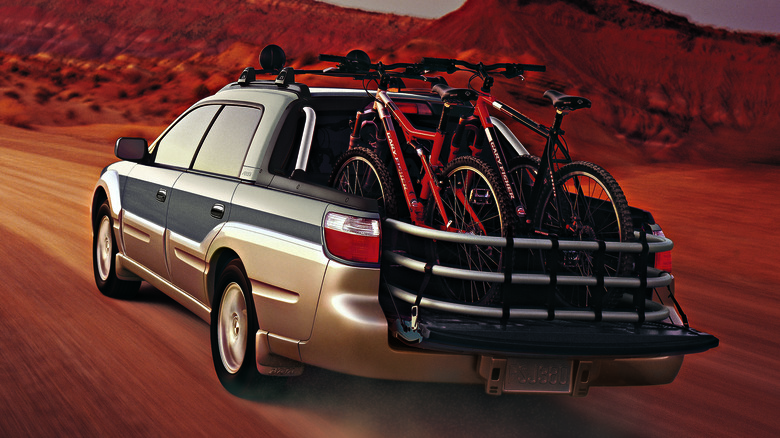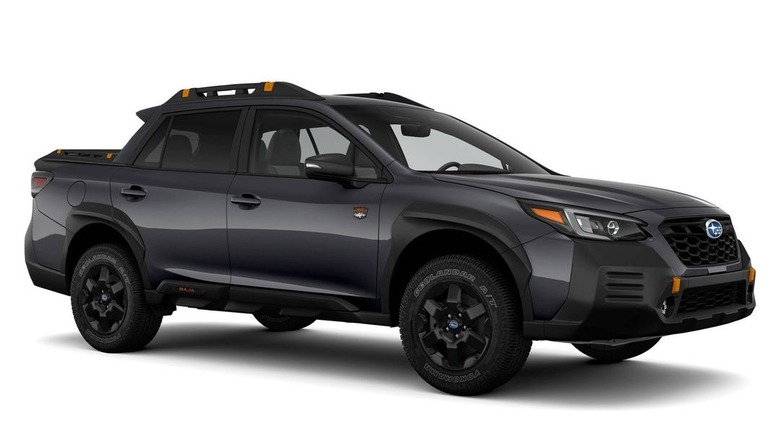Could A Brat Or Baja Revival Do For Subaru What Maverick Did For Ford?
Ford's tiny Maverick pickup truck has proven remarkably popular. How popular exactly? Last year, the ordering process for 2023 models had to be shut down less than one week after opening because the entire year's supply was sold out. Korean automaker Hyundai also makes a competing truck called the Santa Cruz which sells well, too, though not quite the success of the Maverick.
What does this prove? That buyers don't need a 7,000 pound, 500 horsepower behemoth of a truck to take the family camping or make runs to the home improvement store. That's especially true as nationwide gas prices are within striking distance of $4 per gallon on average, underscoring the importance of good fuel economy.
Ditto for auto loan interest rates, which recently exceeded 7% for both 60 month and 72 month terms for the first time since 2008, according to the Federal Reserve. In fact, 17% of Americans are now saddled with a car payment that exceeds $1,000 per month.
Conspicuously absent from the tiny truck market that's owned by Ford and Hyundai is Subaru — a brand which knows a thing or two about developing truck-like vehicles based on its lineup of cars. The Subaru Baja from the mid-2000s was eerily similar to the latest crop of mini trucks, perhaps even ahead of its time.
Before there was the Baja though, there was the Subaru BRAT, a vehicle which circumvented American taxes on imported trucks in a way that some considered genius — while others thought it was just plain weird and/or dangerous.
Subaru's first foray into the truck market
Subaru's BRAT — short for Bi-drive Recreational All-terrain Transporter — was an icon of the late 1970s and early 1980s. Heck, remote-control car manufacturer Tamiya even offered a 1/10 scale drivable electric model of the BRAT. What everybody remembers about the BRAT are its bed-mounted, rearward facing passenger seats, complete with grab handles that aren't unlike the grips on a BMX bicycle.
Those famous seats were born more from necessity than design. At the time, Subaru didn't want to pay the 25% "Chicken Tax" that was and still is levied on imported pickup trucks entering the United States. The funny name stems from the fact that the legislation was retaliation against foreign nations taxing U.S. poultry exports. By fitting rudimentary seats in the bed, the BRAT could be classified as a passenger car, avoiding the expense. It was a win-win since Subaru could sell the BRAT less expensively to consumers without sacrificing profitability.
Unlike other mini trucks that were scaled down versions of full-size counterparts, the BRAT was more car-like, similar to an El Camino or Ford Ranchero. It had swept back, sporty lines with available graphics packages to accentuate its shape. The BRAT was a huge success for the brand until safety regulations put pressure on the alfresco seating arrangement, which was removed for the 1985 model year. In 1987, the BRAT was pulled from the U.S. market entirely, although it soldiered on for a few years in other parts of the world.
The Baja was way ahead of its time
Fast forward to 2003 when Subaru executives decided that it was once again time to experiment with another quirky car-based pickup truck. This time, it was called the Baja, and based on a stretched version of the brand's popular Outback SUV.
Subaru called the storage configuration "Switchback," and while the bed measured a scant three feet long, it was highly versatile. There was a traditional bed extender that prevented cargo from exiting the bed when driving with the tailgate lowered, and an innovative flap in the bulkhead behind the rear seats that allowed long items to protrude into the cabin when needed.
Ultimately though, the Baja was not a sales success. Traditionally, utes have never been as popular in the United States as other parts of the world. Although that bias is slowing shifting toward acceptance, American buyers at that time found the Baja odd-looking; especially in its earliest form, which had significant gray plastic body cladding. Plus, it was thousands of dollars more expensive than its Outback sibling, and double the price of basic small trucks like Ford's Ranger.
After just three short years, the Baja was no more. Since then, Subaru's daring venture into the ute market has achieved something of a cult status, and now commands higher resale values than its Outback siblings from the same era.
Dealerships have already 'teased' a new Baja
Subaru's reputation for adventure and light off-roading make it a natural fit to rejoin the compact truck market. Ford has already proven that affordable and economical mini-trucks are a popular concept, and Subaru has a plethora of all-wheel drive crossover SUVs to select from as the basis for the creation of a successor mini-truck.
Also, whereas the Baja was previously viewed as a pricey alternative to competing body-on-frame midsize pickups, that market segment has grown considerably more expensive over the years. A small unibody pickup could now enjoy a cost advantage.
What might a 2024 Outback-based Baja look like? Subaru dealership Subaru of New England played an April fools joke on fans this year with an Instagram post teasing an upcoming announcement about just such a truck becoming available. While cruel, it did give enthusiasts a professional rendering to drool over. Though not radically different from Hyundai's Santa Cruz, Subaru does have a more rugged image in the marketplace and a built-in client base that could lead to success.
As for that remote control Subaru BRAT made by Tamiya? It was recently re-released by the company to thrill a whole new generation of RC car racers. Perhaps Subaru would consider the same for those of us that prefer piloting the real thing?



